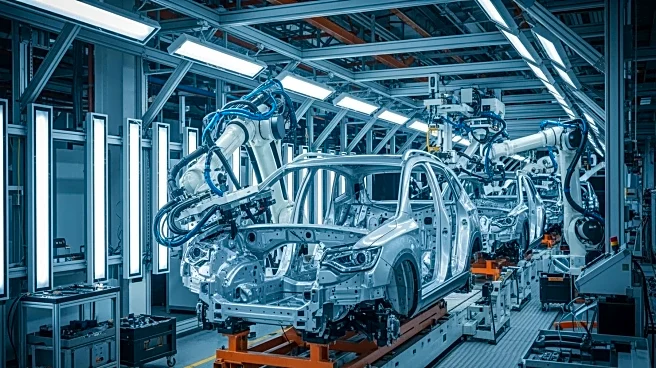What's Happening?
Stellantis has decided to move the production of the Jeep Compass from Ontario, Canada, to Illinois, USA. This decision is part of the company's regular production allocation strategy, which involves reassessing manufacturing locations based on various
factors such as market demand and operational efficiency. The move is not indicative of Stellantis abandoning its operations in Canada, as the company continues to maintain a significant presence in the country. This shift reflects broader industry trends where automakers frequently adjust production sites to optimize logistics and meet consumer needs.
Why It's Important?
The relocation of Jeep Compass production to Illinois is significant for several reasons. It highlights the dynamic nature of the automotive industry, where companies must constantly adapt to changing market conditions and consumer preferences. This move could impact the local economy in Ontario, potentially affecting jobs and supplier relationships. However, it also presents opportunities for growth and development in Illinois, where the production shift may lead to increased employment and economic activity. For Stellantis, this decision underscores the importance of strategic planning in maintaining competitiveness and efficiency in a global market.
What's Next?
As Stellantis transitions Jeep Compass production to Illinois, the company will likely focus on ensuring a smooth operational shift. This may involve coordinating with suppliers, adjusting logistics, and managing workforce changes. Stakeholders in both Canada and the U.S. will be watching closely to see how this move affects local economies and industry dynamics. Stellantis may also explore further production adjustments in response to evolving market trends, potentially impacting other models and manufacturing sites.
Beyond the Headlines
The decision to relocate production raises questions about the long-term implications for the automotive industry in Canada. While Stellantis maintains a presence in the country, the move could signal a shift in how automakers approach international manufacturing strategies. This development may prompt discussions on trade policies, labor relations, and the role of government incentives in attracting and retaining automotive production. Additionally, it highlights the need for regions to diversify their economic bases to mitigate the impact of such industry shifts.















